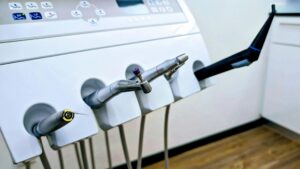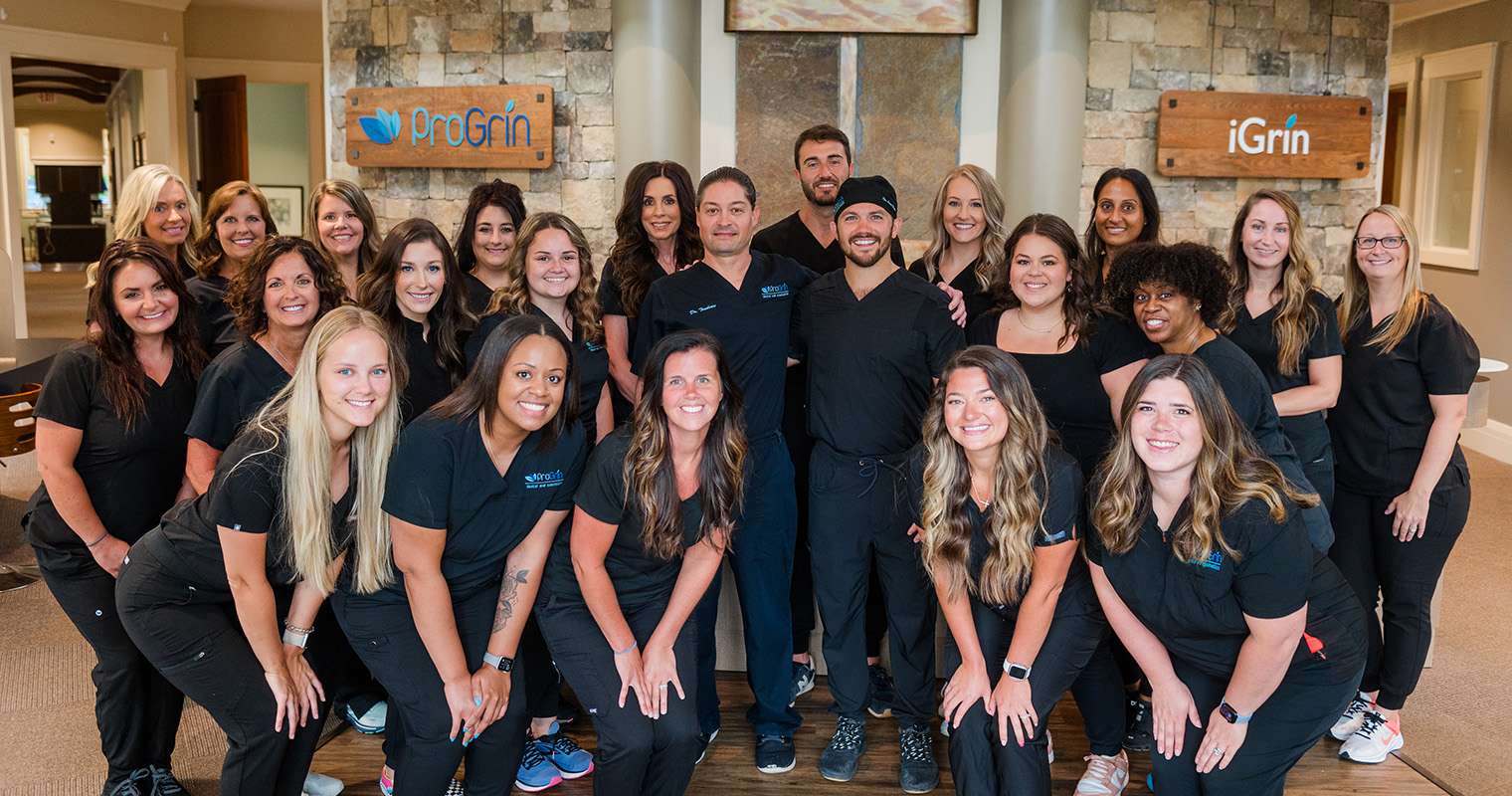Table of Contents
- Key Points
- First Impressions: What We Notice Immediately
- Plaque Detection
- Assessing Gum Health
- The Technology Advantage: Modern Detection Methods
- The Best Treatment Plan: Prevention
- Building a Partnership for Better Oral Health
- The Reward of Healthy Smiles
- References
Key Points
- Dental hygienists do far more than clean teeth.
- They assess the condition of patients’ teeth, gums, and tissue inside the mouth. Hygienists can also detect early signs of various health conditions and make oral hygiene recommendations to patients.
- Having a fuller understanding of dental hygienists’ roles and responsibilities can lead to a greater appreciation of the part they play in dental care and translate to better oral health outcomes.
When you settle into the dental chair, you might wonder what is going through your hygienist’s mind, as they peer into your mouth. They are not just looking for cavities—they’re examining every inch of every surface for signs of minor and major issues.
According to the Ohio State University’s College of Dentistry, dental hygienists can detect early signs of dozens of systemic diseases just by examining your mouth. From diabetes to heart disease, your oral cavity tells a story that extends far beyond your teeth and gums.1
Let’s pull back the curtain and explore what dental professionals really see during your visit, and how you can make sure the story your mouth tells is a positive one. The information I have compiled below will give you the inside scoop on what our hygienists look for in every cleaning and exam. It may help you feel more comfortable going in for a visit, and hopefully allow you to improve your at-home dental care routine.
First Impressions: What We Notice Immediately
Before the examination even begins, an experienced hygienist will gather valuable information just from your initial interaction. Your breath, the way you speak, and even how you position your jaw provide immediate clues about your oral hygiene habits and overall health.
Telltale signs we spot right away:
- Breath quality: Chronic bad breath often indicates poor oral hygiene, gum disease, or underlying health conditions
- Lip and facial symmetry: Swelling or asymmetry can signal infections or other oral health issues
- Speech patterns: Difficulty speaking clearly may indicate dental problems affecting tongue placement
- Confidence level: Patients who cover their mouths or avoid smiling often struggle with oral hygiene concerns
Your mouth reveals lifestyle habits you might not realize are obvious to trained professionals. These observations are not meant to judge, make you feel self-conscious, or (at worst) scare you away from attending your next dental exam, but rather to help us provide better, more personalized care and oral hygiene tips.
Lifestyle indicators we notice:
- Coffee and tea staining: Reveals drinking habits
- Acid erosion: Often indicates frequent consumption of acidic foods, drinks, or the presence of acid reflux2
- Grinding wear patterns: Shows stress levels and sleep habits through tooth wear
- Dry mouth symptoms: May indicate medication side effects, dehydration, or underlying conditions
Understanding these lifestyle factors allows us to tailor our dental tips specifically to your needs. For example, if we see significant acid erosion, we might recommend waiting 30-60 minutes after consuming acidic foods before brushing, or suggest using a straw for acidic beverages. Coffee or tea stains may warrant teeth whitening treatments.
Plaque Detection
One of the most revealing aspects of any dental examination is plaque distribution. Your hygienist can tell exactly where you focus your brushing efforts—more importantly, where you don’t. Plaque does not lie, and it creates a detailed map of your daily oral hygiene routine.
What plaque patterns reveal:
- Heavy buildup along the gum line: Indicates rushed brushing that fails to reach where the teeth meet the gums
- Plaque between back molars: Shows inadequate attention to hard-to-reach areas
- Clean front teeth with dirty back teeth: Suggests brushing primarily for appearance rather than health
- Consistent plaque on one side: Often indicates favoring one side while chewing or brushing
These patterns help us provide targeted dental tips to improve your routine. For instance, if we consistently see plaque buildup in specific areas, we can recommend particular brushing techniques or tools to address those problem zones.
Assessing Gum Health
Your gums tell perhaps the most important story of all. Healthy gums are firm, pink, and do not bleed during routine cleaning.3 When we examine your gums, we are looking for signs that extend beyond basic oral hygiene—we’re assessing your risk for serious health complications.
Gum conditions we commonly observe:
- Gingivitis: Red, swollen, bleeding gums that indicate inflammation from poor oral hygiene
- Periodontitis: Advanced gum disease that can lead to tooth loss and systemic health problems
- Recession: Gums pulling away from teeth, often caused by aggressive brushing or grinding
- Inflammation patterns: Localized swelling that might indicate specific problem areas
The connection between gum health and overall health cannot be overstated. Research shows that bacteria from gum disease can enter the bloodstream and contribute to heart disease, diabetes complications, and even pregnancy complications.4 An assessment by a trained hygienist can help identify such problems and formulate appropriate solutions.
The Technology Advantage: Modern Detection Methods
Today’s dental hygienists have access to advanced technology that reveals far more than the naked eye can see. At Progrin Dental, we use state-of-the-art tools to provide comprehensive assessments that catch problems in their earliest stages.
Advanced diagnostic tools help us see:
- Digital X-rays: Reveal cavities, bone loss, and infections not visible during visual examination.
- Intraoral cameras: Provide detailed images that help patients understand their oral health status.
- Predictive analytics: Advanced systems can analyze patient data to identify individuals at higher risk for certain oral diseases, allowing for targeted preventive strategies and personalized care plans.
- Oral Health Scanning Tools: These devices, often resembling wands, capture detailed images of the mouth, providing immediate insights into oral health conditions and allowing for tracking changes over time.
- Automated Probes: Modern automated probes combine technology with manual efforts to accurately measure periodontal pockets and detect disease activity, often being smaller and more comfortable for patients.
- Cone Beam Computed Tomography (CBCT): While often used by dentists for complex cases like implant planning, hygienists may utilize the 3D imaging capabilities of CBCT to gain a comprehensive view of dental structures, enabling a more thorough understanding of a patient’s oral health.5
- Laser Periodontal Therapy: Lasers are increasingly used for treating gum disease, offering precision in removing bacteria and infected tissue, reducing bleeding, and promoting faster healing with less discomfort than traditional methods.
- Fluorescence devices: Use light to detect early signs of tooth decay (long before visible cavities form).6
These technologies enable us to provide more accurate diagnoses and create more effective treatment plans, ultimately leading to better oral hygiene outcomes for our patients.
The Best Treatment Plan: Prevention
The most rewarding part of our job is seeing patients who take oral hygiene seriously. When we examine a mouth with excellent oral hygiene, it is immediately apparent. Clean teeth, healthy gums, and fresh breath create a positive cycle that benefits both oral and overall health.
Characteristics of excellent oral hygiene we love to see:
- Minimal plaque buildup: Indicates consistent, thorough daily cleaning.
- Healthy gum color and texture: Shows effective plaque removal and good circulation.
- No bleeding during cleaning: Demonstrates well-maintained gum health.
- Fresh breath: Indicates good bacteria balance and thorough cleaning.
Based on what we see every day, here are the most effective oral hygiene tips that make a real difference:
Daily routine essentials:
- Brush twice daily for two minutes: Use a soft-bristled toothbrush and fluoride toothpaste.
- Floss daily: Remove plaque and food particles between teeth where brushes cannot reach.
- Use mouthwash: Choose an antibacterial rinse to reduce harmful bacteria.
- Replace toothbrushes regularly: Every 3-4 months or after illness.
- Time your brushing: Wait at least 30 minutes after eating acidic foods before brushing.
- Focus on technique: Use gentle, circular motions rather than aggressive back-and-forth scrubbing.
- Don’t forget your tongue: Brush or scrape your tongue to remove bacteria and improve breath.
- Stay hydrated: Drink plenty of water to maintain saliva production and natural mouth cleansing.
Building a Partnership for Better Oral Health
The relationship between patient and hygienist should be a partnership focused on achieving optimal oral hygiene. When patients are honest about their habits, concerns, and challenges, we can provide more effective dental tips and create realistic improvement plans.
How to maximize your dental visits:
- Be honest about your routine: Truthful information helps us provide better guidance.
- Ask questions: Understanding the “why” behind our recommendations improves compliance.
- Discuss concerns: Share any sensitivity, pain, or changes you have noticed.
- Follow through: Implementing our oral hygiene tips between visits creates lasting improvements.
The Reward of Healthy Smiles
At Progrin Dental, our greatest satisfaction comes from seeing patients achieve and maintain excellent oral health. When we examine a mouth that shows the results of consistent, proper oral hygiene, it’s a celebration of partnership between patient and professional.
Your mouth tells a story every time you visit us. By understanding what we see and implementing effective oral hygiene tips, you can ensure that story is one of health, prevention, and pride. Remember, every positive change you make in your oral hygiene routine is visible to us and beneficial to your overall health.
The next time you sit in our dental chair, you’ll know that behind our professional masks, we’re not just cleaning your teeth but formulating a plan to address major concerns, or to prevent them from arising in the first place. Call our office today to set up your next visit with a skilled hygienist who can help you optimize oral hygiene and achieve dental wellness.
References
- Matthew J. Messina, DDS, “Health issues a dentist can identify by looking in your mouth,” The Ohio State University College of Dentistry, May 2023, https://health.osu.edu/health/dental-health/health-issues-a-dentist-can-identify.
- Ananya Chakraborty and Ashish P. Anjankar, “Association of Gastroesophageal Reflux Disease With Dental Erosion,” Cureus, October 2022, https://pmc.ncbi.nlm.nih.gov/articles/PMC9667903/.
- Naitik Sharma, “Periodontology Understanding: the Importance of Gum Health,” Journal of Interdisciplinary Medicine and Dental Sciences, Volume 6, Issue 3, May 2023, https://www.openaccessjournals.com/articles/periodontology-understanding-the-importance-of-gum-health-16441.html.
- Kyoko Yamazaki and Nobuhiko Kamada, “Exploring the oral-gut linkage: Interrelationship between oral and systemic diseases,” Mucosal Immunology, Vol. 17, No. 1, February 2024, https://www.sciencedirect.com/science/article/pii/S1933021923000892.
- “Dental Cone-beam Computed Tomography,” U.S. Food and Drug Administration, September 2020, https://www.fda.gov/radiation-emitting-products/medical-x-ray-imaging/dental-cone-beam-computed-tomography.
Dr. Greg Ayers has over 35 years of experience running his own dental practice. He is the CEO and clinical director of ProGrin Dental and Cosmetics, which he and his son founded in 2012. Dr. Ayers is a graduate of the Medical University of South Carolina’s College of Dental Medicine, then furthered his dental education at the Pankey Institute for Advanced Dental Learning. Dr. Ayers is also a graduate of the acclaimed Nash Institute for Dental Learning, and he currently serves as a teaching mentor at the Institute, working with doctors and healthcare professionals from around the world. Dr. Ayers has also authored two books: “The Service Prescription – Healthcare the Way it Was Meant to Be,” and a motivational book entitled “SPARK, Igniting Your Dreams.”
